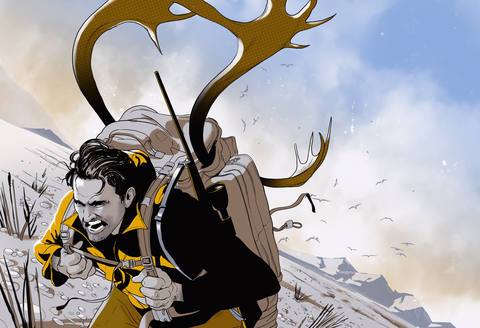
Adapted from the book The Comfort Crisis: Embrace Discomfort to Reclaim Your Wild, Happy, Healthy Self, by Michael Easter, out May 11 from Rodale Books. Copyright © 2021 by Michael Easter
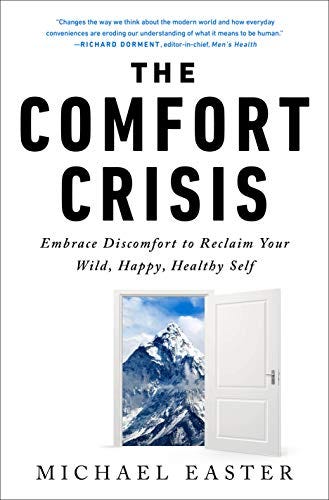
I recently found myself standing in the Arctic tundra, about 120 miles from civilization, in Kotzebue, Alaska, with half a year’s worth of dinner—100-plus pounds of caribou—strapped to my back. Gnarled four-foot antlers burst from the top of my pack, and my shoulder straps felt so weighty that I thought they might slice me lengthwise into thirds. I was up there on a backcountry hunt, and all I needed to do was carry my meat back to camp. Thing is, the five-mile slog was uphill and across a savage landscape that existed in an ice-cream-like state, all spongy layers, dense moss, mucky swamp, and basketball-sized tufts of grass. No easy path.
The basic act of carrying is something most of us are doing less and less now, thanks to shopping carts and cars and Amazon Prime dropping everything on our doorstep. But it’s something that my body (and every human body) was built for. Gym theory suggests we should do bench presses and biceps curls, then hit a machine for cardio. But you can’t survive on gym strength alone in the wild.
You can, however, build the body you want with techniques you learn in the wild. Humans evolved to carry weight over long distances, and when we do, we kill the division between strength and cardio, tapping into an act that can improve every aspect of our fitness all at once.
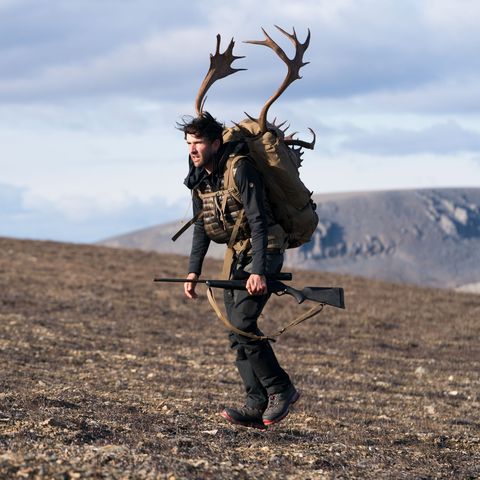
Somewhere around mile two, my lungs started feeling as though they were sitting atop Bunsen burners and my legs quivered like Jell-O. And yes, that felt a lot like a workout. I’d done quick, intense gym workouts, such as the time I burned 60 calories in 60 seconds on a fan bike and vomited. I’d done lengthier but less intense sessions, too, including a 24-hour endurance challenge. Carrying my caribou married both, simultaneously too intense and too long. My heart rate was over 150, the same rate I’d sustain trying to PR a marathon. And the muscles in my legs and torso felt like they would during some masochistic lower–body workout—like German volume training, ten sets of ten heavy squat reps.
This wobbly, exhausted feeling was probably one our early ancestors could sympathize with. A seminal study in Nature hypothesized that early humans tracking prey may have run for miles in the heat, until the animal toppled over from exhaustion. Then we’d kill it and carry it miles back to our camp. This is why we have two legs, springy arches in our feet, big butt muscles, sweat glands across our body, and no fur.
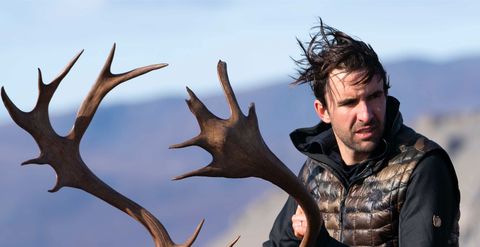
However, early humans weren’t especially strong. Having extra weight, even in the form of muscle, may have been a liability in warmer climes; a tall, slender body type was advantageous for endurance hunting. But modern humans are extreme in our ability to hoof heavy items from A to B, according to research from the UK. Distance running and carrying are the only things humans are uniquely physically good at in the animal kingdom. Other primates, for example, struggle to side-carry loads that are only a few pounds. But humans are capable of easily gripping heavy weights and walking, just as I did when I side-carried the heavy caribou hindquarters over to my pack.

While many people run for fitness, there are few who carry (aside from Special Forces soldiers). But carrying has too many benefits to ignore. It taxes what Rob Shaul, C.S.C.S., calls the tactical chassis. His Mountain Tactical Institute develops specialized fitness plans for mountain athletes and military special operators. Shaul considers the tactical chassis everything between the shoulders and knees-—hamstrings, quads, hips, abs, obliques, back, etc.—and all that musculature is critical for combat, hunting, and mountain sports, he told me. Carrying can even help prevent back pain, since it trains core endurance.
It’s easiest to think of carrying as cardio for people who hate running and lifting for people who hate the gym. That’s because it corrects for body type. If you’re too big, the cardio component leans you out. Too skinny? The weight forces your body to add muscle.

After five miles and an equal number of hours, I made it back to camp, my body totally fried and my muscles barely responsive. When I got home from the Arctic, the month of carrying had carved me into the best shape of my life, despite not running or touching a single weight on the trip. I could zoom up mountain trails that once slowed me down and deadlift 50 pounds more than I had before I’d left.
One friend described me as looking like a human weapon. And I had a freezer full of caribou. The downside: I’m sick of that minerally caribou taste.
Three Killer Carries
Doug Kechijian, D.P.T., a former pararescueman in the U. S. Air Force, had me prepare for my adventure in the Arctic by doing these three carries. Mix one into your workouts every week.
FOR CARDIO: Rucking

FOR STRENGTH: Goblet Walk
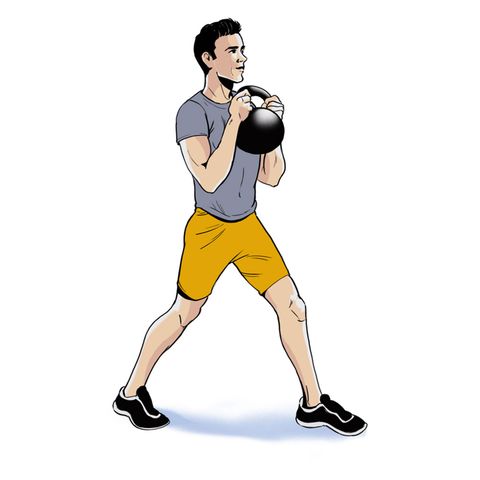
FOR CORE: Sandbag shoulder

This story appears in the May 2021 issue of Men’s Health with the headline The Weight We Carry.
Source: Read Full Article
